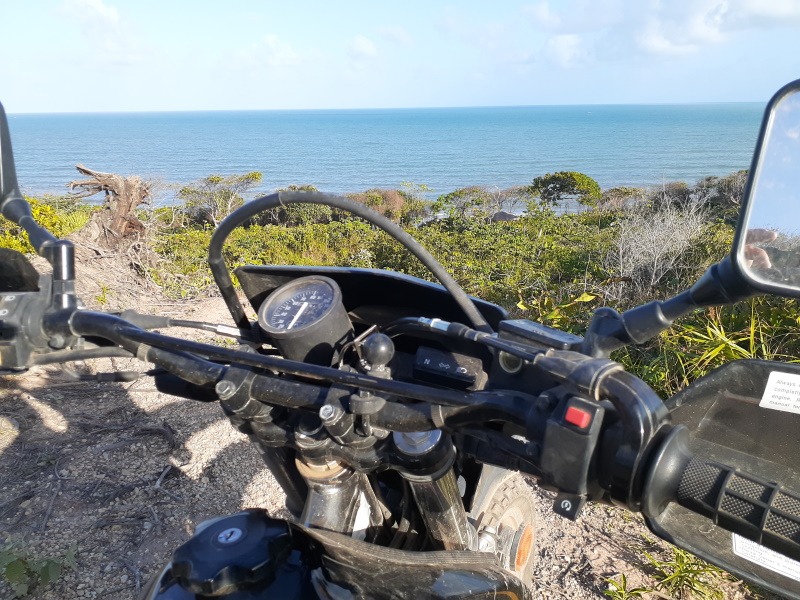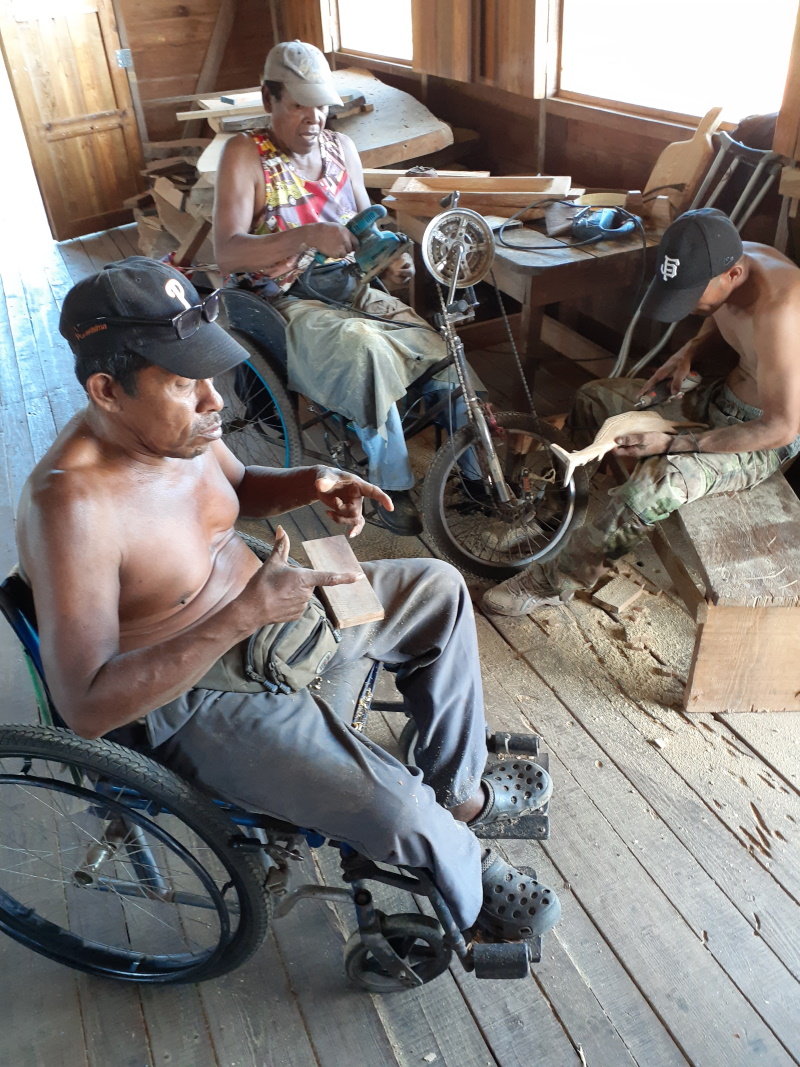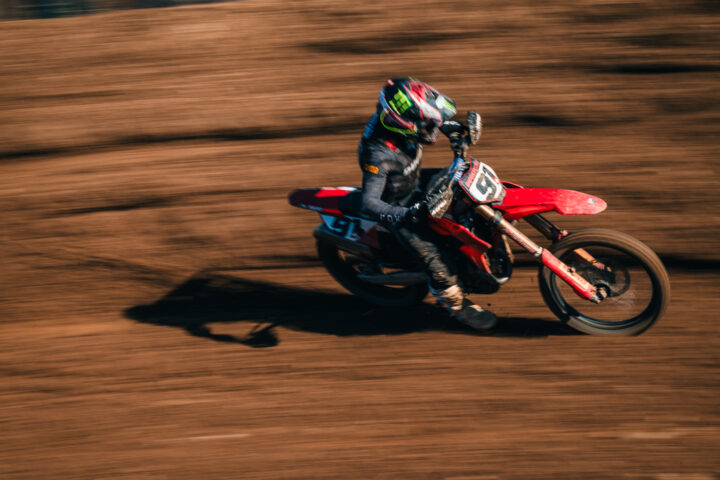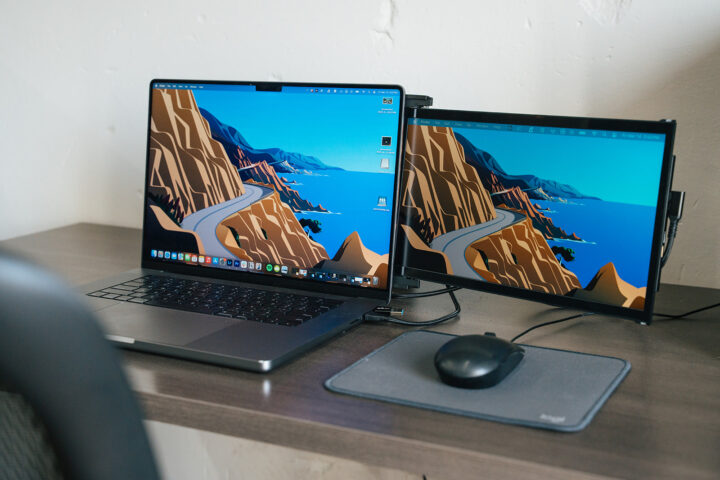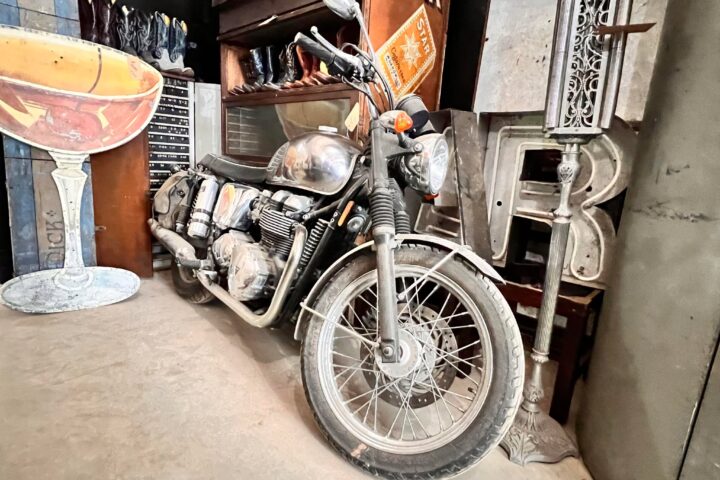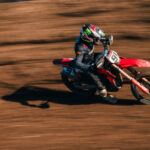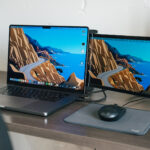If you are looking for an adventure with purpose, Harvest Initiative will be offering multiday motorcycle adventures starting later this year. Founder and lead adventurist Marcus Pearson has been working in Nicaragua for over 25 years and will take you on a trek where tourists don’t go. He sent me this write-up about his last ride. The Trek is called the Puerto Cabezas 350, check out his story below. ~ Michael Satterfield
This month I had the opportunity to ride from our base site near Tipitapa to the port city of Puerto Cabezas on the Atlantic coast and back, hitting many points of impact for our development work here in Nicaragua. Our organization, Harvest Initiative, has been active here for many years with education and development projects in conjunction with community groups and churches located in the most marginalized areas. For many years the big single-cylinder thumper motorcycle has been my primary means of transportation around the back roads of Nicaragua to visit quickly the least served areas. I program the work of the Nicaraguan team members who come after me with equipment, teaching, materials, or agriculture supplies as the case may be. Harvest Initiative practices an asset-based community development model whereby a community first evaluates its strong points, with our help if needed. Once resources that already exist in the community are identified we help them plan strategies to implement more just use of those resources. In this way, we forge a relationship with the barrios or villages as equal partners that allows us to go forward together each contributing from our strengths. This methodology requires a lot of time spent traveling to the communities multiple times to build trust, learn the true situation and underlying causes and identify key community contact people. So we come back to me and the motorcycle riding around the backcountry of Nicaragua.
I am on my third Suzuki DR650se, a 2014 model that replaced a 08, that replaced an 05. Don’t worry the older ones are still running and in service with other Nicaraguan team members who don’t do the distances I routinely ride. Pros of DRs:. Good fuel economy, all-around off-road performance, reliability, repair parts relatively accessible, pretty cheap to buy on Craigslist. Cons: flat acceleration, lackluster braking and carbureted. Mine is pretty much stock, in great measure because as a small not for profit our budget is limited. I do have a Seat Concepts replacement seat cover which is a great improvement overstock.
Tipitapa-Muy Muy: 3hrs 160km I learned early that first day, that the mother of some of our oldest Nicaraguan friends had passed away. A great woman of faith, she had suffered greatly and at 82 goes to a well-deserved rest. So the day got turned upside down getting vehicles to take the multitude of family members to the wake about three hours north. Dying is a big deal in Latin America and a death in the family causes all to stop and gather for a day or two of reminiscing, eating, and playing cards. I sat with the widower, Don Calixto who is a long-time friend, and then accompanied the burial party up a winding dirt road to the cemetery at the Él Chile community northeast of Matagalpa. As we rose in elevation each turn we could see the lights of cooking fires and scattered electric lights at clusters of houses below. The small community where she is buried is centered around the Roman Catholic Church. However, it is an old tribal center also and many practices from traditional religions have been grafted into Christian practices. The neighbor’s made crosses tipped with garlic cloves to put in the grave to keep evil spirits away. It’s difficult to imagine a more peaceful place to be interred.
Muy Muy-Alamikamba: 6 hrs 250 km. After spending the night in Muy Muy I went on to Alamikamba to visit our school project there among the Miskitu Indians. About halfway, to the town of Siuna, the pavement runs out, and its a dirt road the rest of the way. Maintenance is at the whim of local officials so a stretch of road can be either really good or a tortuous collection of rocks and mud. In general, the road has been getting better and the mile+ long mud holes that would swallow a semi-truck are a thing of the past. The terrain is not particularly impressive on this stretch of road, mostly flat cow pastures as far as one can see. However, I always feel like I am coming home when I get off the pavement out into the more rural parts of Nicaragua. Being surrounded by the farms carved out of the hills where life revolves around the agricultural seasons reminds me of all the sturdy people I have known over the years from these communities. I have learned a lot about patience, faith perseverance and even entrepreneurship from the strong men and women who live in these outback settlements.
In the town of Alamikamba, we have a school and some community water progress so there is plenty to do both in the town as well as in the smaller villages along the Prinzapolka RIver. Along with a couple of old friends from California who were visiting, we traveled downriver to the Galilee community to show the Jesus film in the local Miskitu language. We also did some community organization work for a water project in Limbaika nearby. The river villages all perch on the banks in areas of relatively high ground, typically the berms that were thrown up by the current over the centuries and are the highest ground there is. Even so, the communities typically build houses on wooden pilings to give an extra few feet of security. Floods are common, most areas get major flood surges about every three years. If this flooding happens during the growing seasons it can wipe out a crop entirely.
Life is quite precarious and isolated for the people who live along the river. Certainly, a highlight of this leg of the trip was reconnecting with now two-year-old Halmer. He was born with severe deformities in his feet. But now with surgery and therapy, he walks normally. Harvest Initiative helped to connect his family with the resources in Managua to get the care. Over a period of months, they made several trips by bus, 16 hours. People in these remote areas often are intimidated by the process or simply do not know that there are. HI is a crucial link between those needing care and the medical facilities where they can be treated, it’s why we spend so much time crisscrossing the backcountry.
Alamikamba to Puerto Cabezas. 8 hrs 350 km Finishing up in Alamikamba, I headed off to Puerto Cabezas on the eastern Sea coast. I did this in two days since I had some work to do in the old gold mining center, Rosita. There I needed time to follow up on a water project and pay my radio program airtime bill. HI has a daily radio program in Miskitu and we help the station out each month. I spent the night in Sahsa, hoping to catch an early run of the Wawa Boom ferry the following day. I didn’t make it. The ferry was five feet from the bank when I got there. Since I didn’t have my Fast and Furious tee-shirt on I decided to wait. And wait. And wait some more drinking something that was sold to me as coffee, practicing my Miskitu as the ferry awaited tantalizingly on the far bank. The Miskitu lights up when I try to practice my language skills. I am sure I sound like a 3-year-old but bless ‘em, most are patient with me. They are quick to switch back to the solid ground of Spanish for important things like paying. Eventually, the ferry decided that there were enough people to make the crossing worthwhile and chugged its way across. The ferry is essentially a big steel box guided by cables and is pulled across the river by a single-cylinder engine coupled to an old truck differential. It works. Except when it doesn’t.
Arriving in the town of Puerto the pace of life quickens just a little. It is the administrative center of the district. It also hosts what’s left of the fishing fleet, lobster is about the only commercial catch still active. The town, Bilwi in the local language is really the only center beside Waspam that in my opinion has any true indigenous flavor left. Here the Miskitu, Mayagna, and Caribe ethnic groups outnumber the Spanish-speaking Mestizos who have moved in from the western part of Nicaragua. I have to say it’s just fun to walk down the street and get more “Nakisma!!” Miskitu or “Manin!” creole English greetings than plain old Buenos Dias. Also of note is that the people here remember the “good ole days” as the 60s and 70s when the American and Canadian fishing, timber, and gold mining concerns were in the boom stage. So there are some good feelings toward Americans that would not expect to find.
In Bilwi I needed to follow up on prospects and suspects for projects and specifically find a secure place to dock our boat when the time comes. In this search, I met the AquaQuest staff out near the old Lamlaya dock. They work recovering sunken logs from past timber operations dating back to the 1900s. From the rivers, they are able to pull these old-growth logs and saw them into high-quality lumber. As a small start-up company, they face all the barriers that enterprises here encounter: bureaucracy, high energy costs, low initial volumes, and marketing hurdles. To their credit, they are making a social impact part of their story. They are using the offcuts of the timber to supply a teaching workshop for disabled lobster divers. Lobster divers too often are pressured by the ship owners to stay down too long, too deep, and then return to the surface quickly to allow the ship to move on. The (inadequate) uncontrolled surfacing causes nitrogen in the blood to bubble resulting in paralysis or death. This is often referred to as the “bends” and has resulted in hundreds of divers being crippled. There is little other industry so young men still risk their lives in the trade. Aquaquest gathers these divers and teaches them to do woodworking and carving to produce products they can sell to support themselves instead of begging or depending on family members.
Puerto Cabezas to Tipitapa 450km 14 hrs. I took a rambling route to return, the first part retracing my path to Alamikamba to wrap up a few things, then on toward Base. It rained a fair bit between Siuna and Rio Blanco, I waited for most of it out, but the road often has a slippery mud paste on it after a rain so one has to go with caution. Mud or dust, take your pick. I decided to see some new country on the old dirt road that goes between Matiguas and Matagalpa, that stretch had been on my list to ride for a while and with a great sunny day, it seemed the right time. The road is somewhat hilly and winding, in decent shape for a dirt road. Sometimes the backroads stay in better condition simply because they don’t see the heavy truck traffic that the main routes suffer. The routs get you back far enough into the countryside to see houses made of sticks and mud, a site less and less common. It appears paradoxical, but I have been in the mud houses, known as Takizal that were cooler, cleaner, and more inviting than many homes made of more modern materials.
The route winds around the brushy slopes where it’s difficult to imagine even the simplest agriculture being successful. The dry season was well underway causing browns to crowd out greens, still, the fiery blooms of the llama de bosque tree and other dry season flowering trees lend some color. A bonus was spotting some toucans flying, fewer and fewer are seen in the wild.
The last stop on the trip was our school in San Benito. It’s one of our larger projects with over 300 students. Now in its tenth year of service to the community, the school offers preschool through high school in a very poor neighborhood, Many of the children, although not technically orphans, receive so little attention in their home that the school is the most nurturing part of their day. We are thankful for the founding director, Danira, and her staff of dedicated Nicaraguan teachers who give so much of themselves to these children. At the school, we looked at some construction projects we are planning r the upcoming months to improve the school’s infrastructure.
Back at the base, dusty and tired of course the first thing is clean up and make some coffee to drink while reflecting on the good people we have doing good things all around Nicaragua. It is a real perk of my position that I get to spend so much time connecting with these people. On a motorcycle.
Come Ride with Us.
We would like to offer the opportunity to ride on one of our trips. We can arrange for you and a couple of friends to go with a guide or we are pleased to rent our equipment and help you plan a route. For more info contact Cosehanic.com.

